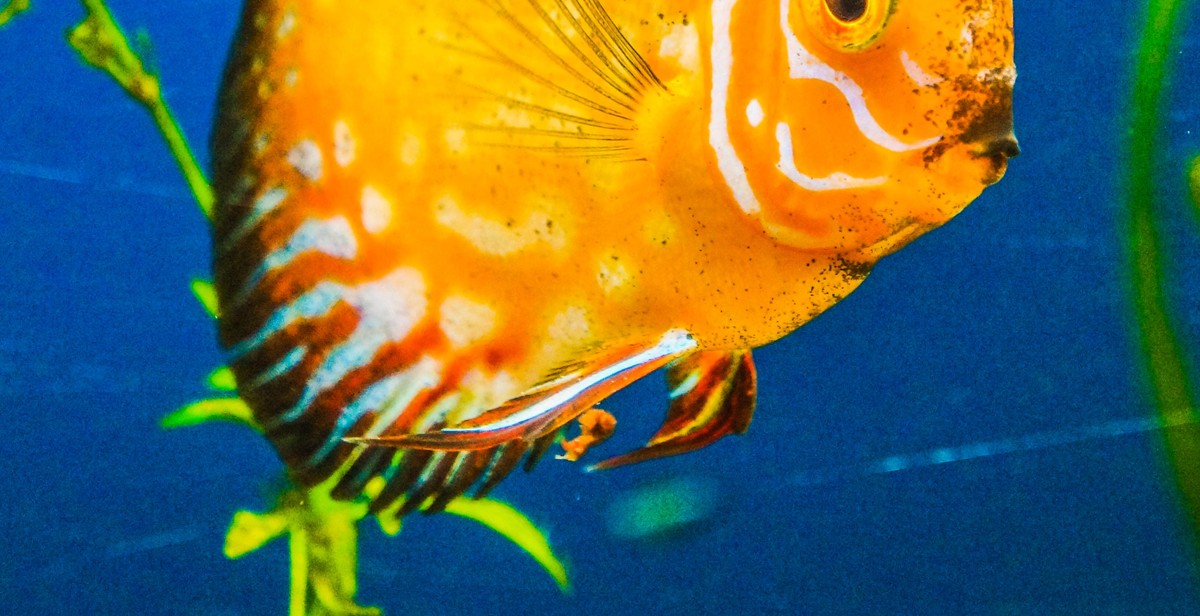Introduction
Keeping pet fish is a popular hobby around the world. Aquariums are not only aesthetically pleasing but also can be a source of relaxation and stress relief. However, maintaining a healthy and thriving aquarium requires proper care and attention. Neglecting your pet fish can lead to health problems and ultimately, death. Therefore, it is crucial to understand the essential tips for aquarium fish keeping.
Why is it important to care for pet fish?
Just like any other pet, fish require proper care and attention. They need a clean and healthy environment to thrive. Failure to provide them with the right conditions can lead to various health issues such as swim bladder disease, fin rot, and ich. Additionally, poor water quality can cause stress and weaken their immune system, making them more susceptible to diseases and infections. Neglecting to care for your pet fish can also lead to a shorter lifespan and decreased quality of life.
Therefore, it is essential to learn how to care for your pet fish properly. This article will provide you with essential tips for aquarium fish keeping to ensure that your fish live a healthy and happy life.

Setting up the Aquarium
Before bringing home your new pet fish, it is important to properly set up their aquarium. Here are the essential steps to follow:
Choosing the Right Aquarium Size and Location
The first step in setting up an aquarium is choosing the right size and location. The size of the tank will depend on the type and number of fish you plan to keep. As a general rule, allow one gallon of water per inch of fish. It is also important to choose a location that is away from direct sunlight, drafts, and high traffic areas.
Adding Substrate and Decorations
Once you have chosen the right aquarium size and location, it is time to add substrate and decorations. Substrate is the material that lines the bottom of the tank and helps support live plants. Decorations, such as rocks, driftwood, and artificial plants, provide hiding places and a more natural environment for your fish.
Installing the Filtration System
A filtration system is essential for keeping your aquarium clean and healthy for your fish. Choose a filter that is appropriate for the size of your tank and the type of fish you have. A good filtration system will remove waste and debris from the water, and help maintain a healthy environment for your fish.
Adding Water and Cycling the Tank
Once you have added substrate, decorations, and installed the filtration system, it is time to add water to the tank. Use a dechlorinator to remove any harmful chemicals from the tap water. Cycling the tank is the process of establishing beneficial bacteria in the filter media and substrate. This process can take several weeks, but is necessary to maintain a healthy environment for your fish.
By following these steps, you can ensure that your aquarium is properly set up and ready for your new pet fish.

Choosing the Right Fish
Before bringing home any fish, it is important to research the different species and their compatibility with other fish. This will help ensure a peaceful and healthy environment for your aquatic pets.
Researching Fish Species and Compatibility
There are numerous species of fish available in the market, and each species has its own specific needs and requirements. It is important to research the different species and their compatibility with other fish before making a purchase. Some fish are known to be aggressive and may not do well with other fish, while others may require specific water conditions or tank setups.
Consider factors such as the size of the fish, their activity level, and their dietary needs when researching different species. It is also important to consider the size of your aquarium and how many fish it can comfortably accommodate.
Selecting Healthy Fish from a Reputable Dealer
When selecting fish for your aquarium, it is important to choose healthy specimens from a reputable dealer. Look for fish that are active, alert, and have bright colors. Avoid fish that appear lethargic, have torn fins, or show signs of disease.
It is also important to ask the dealer about the fish’s history and any previous health issues. This will help you make an informed decision and avoid potential problems down the line.
| Tip | Description |
|---|---|
| Observe Fish Behavior | Observe the behavior of the fish in the tank to ensure they are compatible with each other. |
| Check Water Quality | Check the water quality of the tank before introducing new fish to ensure they can thrive in the environment. |
| Quarantine New Fish | Quarantine new fish for at least two weeks before introducing them to the main tank to prevent the spread of disease. |

Feeding and Nutrition
Feeding your pet fish is more than just dropping flakes into the tank. Understanding the nutritional needs of your fish is essential to their health and well-being. Fish require a balanced diet that includes protein, fats, and carbohydrates.
Choosing the Right Fish Food
When it comes to choosing the right fish food, there are a few things to keep in mind. First, consider the type of fish you have. Different species have different dietary needs, so make sure you choose a food that is appropriate for your fish. Second, consider the form of the food. Fish food is available in flakes, pellets, and frozen or live options. Flake food is the most common and convenient option, but pellets and frozen or live food can provide more variety and nutrition. Lastly, look for high-quality food that is specifically formulated for your fish species.
Creating a Feeding Schedule
Creating a feeding schedule is important to ensure that your fish are getting the right amount of food without overfeeding them. Overfeeding can lead to health problems and poor water quality. It’s best to feed your fish small amounts of food 2-3 times a day, rather than one large feeding. This will help prevent overeating and ensure that your fish are getting the nutrients they need.
| Feeding Tips |
|---|
| Remove any uneaten food after 5-10 minutes to prevent it from decomposing and polluting the water. |
| Rotate the types of food you offer to provide a varied diet. |
| Avoid overfeeding your fish, as this can lead to health problems and poor water quality. |
By understanding the nutritional needs of your fish, choosing the right fish food, and creating a feeding schedule, you can ensure that your pet fish are healthy and happy.

Maintaining Water Quality
Keeping the water quality in your aquarium stable is crucial to the health and well-being of your pet fish. There are several steps you can take to ensure that the water in your aquarium remains clean and safe.
Testing and monitoring water parameters
Regularly testing and monitoring the water parameters in your aquarium is essential. This includes measuring the levels of ammonia, nitrite, nitrate, pH, and water hardness. You can use test kits that are readily available at pet stores to check these levels.
It’s important to keep the levels of ammonia and nitrite at zero, as these compounds can be toxic to fish. Nitrate levels should also be kept low, ideally below 40 ppm. pH levels should be stable, and water hardness should be within the range suitable for your fish species.
Performing regular water changes
Regular water changes are necessary to remove accumulated waste and maintain water quality. The frequency and amount of water changes depend on the size of your aquarium, the number of fish, and the filtration system you’re using.
As a general rule, you should aim to change 10-20% of the water in your aquarium every 1-2 weeks. Use a siphon to remove debris from the substrate and clean the aquarium walls with an algae scraper.
Cleaning the aquarium and equipment
Cleaning the aquarium and equipment is also important for maintaining water quality. You should clean the filter media regularly, as this is where most of the beneficial bacteria that break down waste reside.
You should also clean the aquarium walls and decorations regularly to remove any accumulated debris. Use a sponge or scraper to clean the glass, and rinse decorations thoroughly before placing them back in the aquarium.
| Water Quality Parameter | Ideal Range |
|---|---|
| Ammonia | 0 ppm |
| Nitrite | 0 ppm |
| Nitrate | Below 40 ppm |
| pH | 6.5-8.0 |
| Water hardness | Depends on fish species |
- Regularly test and monitor water parameters
- Perform regular water changes to remove accumulated waste
- Clean the aquarium and equipment regularly to maintain water quality

Common Health Issues and Treatment
Just like any other living creature, fish can fall ill and require immediate attention. It is essential to keep an eye on your fish and be able to identify the signs of illness in order to treat them promptly. Here are some common health issues and their treatments:
Identifying Signs of Illness in Fish
Some of the common signs of illness in fish include:
- Loss of appetite
- Lethargy and sluggishness
- Erratic swimming patterns
- Visible wounds or sores
- Abnormal breathing patterns
- Cloudy or discolored eyes
If you notice any of these signs, it is important to take action immediately and seek treatment.
Treating Common Fish Diseases
Some of the most common fish diseases include:
| Disease | Symptoms | Treatment |
|---|---|---|
| Ich | White spots on the body and fins | Medication containing copper or formalin |
| Fin Rot | Deterioration of the fins, redness, and inflammation | Antibiotics and improved water quality |
| Velvet | Yellow or brownish-gold dust-like appearance on the skin | Medication containing copper or malachite green |
| Popeye | Bulging and protruding eyes | Antibiotics and improved water quality |
It is important to note that prevention is always better than cure. Maintaining good water quality, a balanced diet, and a stress-free environment can help prevent many common fish diseases. Regularly inspecting your fish for signs of illness and seeking prompt treatment can help ensure your fish remain healthy and happy.

Conclusion
Keeping pet fish can be a rewarding and enjoyable experience, but it requires proper care and attention. By following the essential tips outlined in this article, you can ensure that your aquarium fish remain healthy and happy.
Remember to:
- Choose the right type and size of aquarium for your fish
- Provide a proper filtration system
- Maintain the water temperature and quality
- Feed your fish a balanced diet
- Clean your aquarium regularly
- Monitor your fish for signs of illness or stress
It is important to research and understand the specific needs of your fish species to ensure that they thrive in their environment. By providing the necessary care, you can enjoy the beauty and companionship of your pet fish for years to come.
Remember, a healthy aquarium means happy fish!
| Article Title: | How to Care for Pet Fish: Essential Tips for Aquarium Fish Keeping |
| Article Author: | Your Name |
| Article Published: | Month Day, Year |
